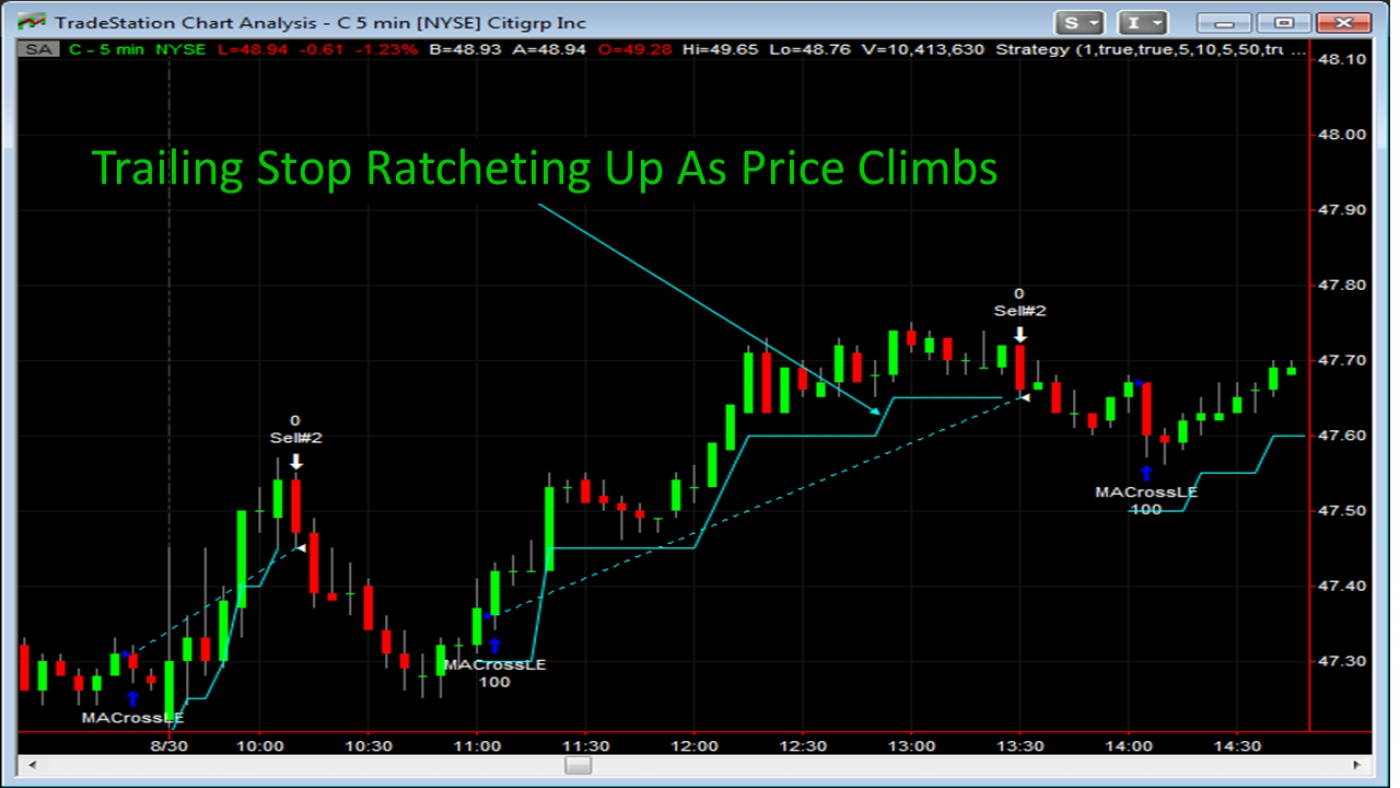When you first entered the position at 100, if the price had suddenly dropped, the trailing stop would not increase in price, but would remain at 95. If the price continued to drop, the trailing stop would be hit and exit around 95, providing a 5-point protective stop-loss. Once the price climbed to 105, the trailing stop moved to a break-even exit at the entry price of 100. After this, as the price continued to increase the trailing stop provided profitable exits as it moved above the break-even price of 100. This feature of the trailing stop, where it initially provides a protective stop-loss and then shifts to providing profitable exits as the price continues to rise, is very desirable and one reason that many traders like using trailing stops. The other desirable feature of a trailing stop is that it keeps increasing its exit price as long as the price steadily climbs, so the trade profit steadily increases as the price increases. If the price climbs a long way before reversing, you can end up with a very profitable trade, all the while having protection against a large loss of profit. But trailing stops have several significant disadvantages:
- Profitability is a very strong function of the current market behavior. If the market is “choppy” or volatile or has lots of “sideways action”, trailing stops can be “stopped out” or exit early, resulting in many losses and small profits. You can adjust the trailing stop for the market volatility by using the Average True Range, the average size of the price bars and a measure of the market volatility. But this may not fix the issue, as you may have to set too large or “wide” a trailing stop which does not quickly adjust to capture profits.
- Accurate back-testing of trailing stops requires the strategy update the trailing stop on each price tick, or each change in the price. This in turn causes the strategy to take long periods of time to run. And for TradeStation, you may be limited to roughly 6 months of 1-tick data, which is required to update the trailing stop on each price change. So this will limit you to only being able to back-test a strategy over a 6-month time period, which is not very long, and does not capture a large range of market behavior to insure your strategy is robust over a wide range of market conditions.
- TradeStation provides built-in trailing stops which work accurately with detailed 1-tick price data. But these trailing stops can create a strong “positive bias” when used with regular price bars, such as 1-minute or 5-minute bars. The strong positive bias can mislead you by showing high profitability in back-testing, but result in large losses in live trading. So before live trading any strategy using regular trailing stops, always back-test using 1-tick data to accurately determine the strategy profitability.
There are a variety of techniques to create “custom” trailing stops which get past the 1-tick data limitation and which adjust for market choppiness. However, no matter how clever the trailing stop design is, there are no perfect trailing stops which work well in all market conditions. Developing custom trailing stops is an area where Emerald Trading Technologies, Inc. can help.



